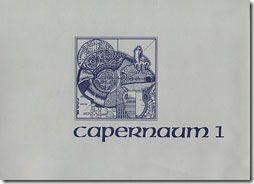Prof. Aren Maeir, archaeologist directing the excavations of Philistine Gath, mentions that there are still openings for this summer’s excavation. He adds, “Remember – talking about the ANE, archaeology and the Bible, without actually experiencing excavations – is like a Bedouin who lives in the Sahara learning to swim thru a correspondence course…” He writes:
EXCAVATION AND FIELDSCHOOL OPPORTUNITY IN ISRAEL
FOLLOW IN THE FOOTSTEPS OF DAVID AND GOLIATH: DIG PHILISTINE GATH – THE
TELL ES-SAFI/GATH ARCHAEOLOGICAL PROJECT
JULY 5 – 31, 2009
THE SITE
Tell es-Safi/Gath (Hebrew Tel Tsafit), Israel, is a commanding mound located on the border between
the Judean foothills (the Shephelah) and the coastal plain (Philistia), approximately halfway between Jerusalem and Ashkelon. At about 100 acres in size, it is one of the largest and most important pre-Classical period archaeological sites in Israel. Tell es-Safi is identified as Canaanite and Philistine Gath (known from the Bible as the home of Goliath and Achish) and Crusader Blanche Garde. The site was inhabited continuously from the Chalcolithic period (5th millennium BCE) until 1948 CE.
THE PROGRAM
All able and willing people between 16 and 80 are invited to join us for a unique and exciting experience uncovering the history and culture of the Holy Land. In addition to participating in all facets of the excavation process, participants will be provided with an opportunity to learn cutting-edge techniques of field archaeology, gain experience in archaeological science applications (with a unique program in inter-disciplinary archaeological science in the field), hear lectures about the archaeology and history of the region and related issues, and go on field trips to nearby sites of historical/archaeological and/or contemporary interest. Participants will join a young, vivacious team comprised of staff, students and volunteers from Israel and the world-over. Students can earn either 3 or 6 university credits through Bar-Ilan University, the second largest university in Israel.
Accommodations (including kosher food) will be provided at idyllic Kibbutz Revadim, a short drive
from the site. Rooms (4-6 per room; single and double rooms available at extra charge) are air-conditioned and there will is to the Kibbutz pool. And don’t forget the weekly, Thursday evening, Bar-B-Q!
WORKDAY (more or less)
6am to 1 pm excavation; Afternoon: various excavation related processes (such as pottery reading) and occasional tours; Evenings: occasional lectures. We work Sunday afternoon to Friday mid-day.
You can get more details here, and the registration form here (pdf).
 Greek Orthodox Patriarchate of Jerusalem. The first five seasons have yielded not only much ceramic and numismatic material, but also a rather satisfactory stratigraphic sequence, providing a continuity of some 400 years, from the early 7th century to the early 11th century A.D. The findings are illustrated by eight full-color plates and 14 foldout plans.
Greek Orthodox Patriarchate of Jerusalem. The first five seasons have yielded not only much ceramic and numismatic material, but also a rather satisfactory stratigraphic sequence, providing a continuity of some 400 years, from the early 7th century to the early 11th century A.D. The findings are illustrated by eight full-color plates and 14 foldout plans.